Welcome, fellow adventurers! John “The Retired Ranger” here. Today, we embark on an enlightening journey through the varied world of lantern fuel types. Over my decades as a park ranger, I’ve seen technology evolve, but the core need for reliable, efficient lighting in the wilderness remains unchanged. Whether you’re a seasoned camper or a novice explorer, understanding your lantern fuel types is crucial for a successful and safe outdoor experience. Let’s dive into the details of propane, butane, and other lantern fuels, exploring their strengths, weaknesses, and best use cases.
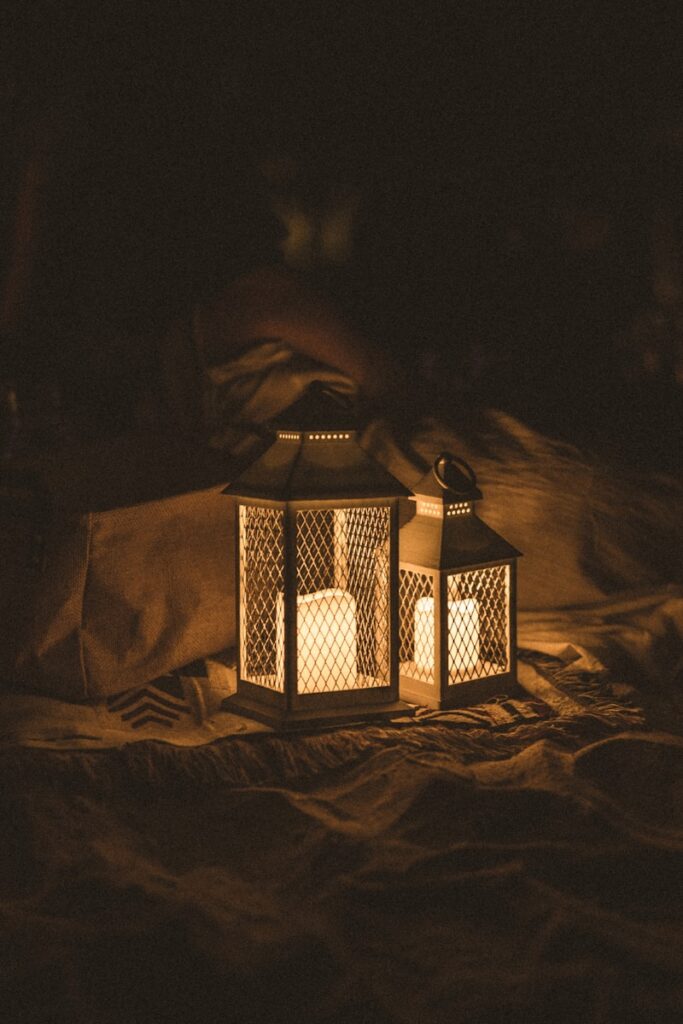
Choosing the right lantern fuel can make all the difference in your outdoor adventures. Remember those cold, dark nights when the only light came from a flickering candle lantern? Modern lantern fuel types have come a long way since then. Today, we have a plethora of options, each offering unique benefits. But with so many choices, it can be daunting to figure out which one is right for you. That’s where I come in, sharing my decades of hands-on experience to guide you through the maze of lantern fuel types.
Let’s start with the basics. Propane, butane, liquid fuel, solar-powered, battery-powered, and even candle lanterns—each fuel type has its own story and place in the camping world. Propane and butane are popular choices for their convenience and efficiency, but they each have their quirks. Propane, for instance, is a robust and reliable fuel, ideal for long-term camping trips, while butane is lightweight and perfect for short, quick outings.
Liquid fuel lanterns, on the other hand, are the versatile veterans of the lantern world. They can run on various fuels like white gas, kerosene, and even unleaded gasoline. These lanterns are a testament to durability and adaptability, qualities that are invaluable in the wilderness. But, they do require more maintenance and careful handling. Solar-powered lanterns, the eco-friendly innovators, are a modern marvel, harnessing the power of the sun to provide light without any fuel at all. However, their efficiency depends heavily on the availability of sunlight, which can be a limitation in certain conditions.
Battery-powered lanterns offer convenience and ease of use, making them a favourite among many campers. They are lightweight and portable, perfect for those who prefer to travel light. However, they come with the caveat of battery life and the environmental impact of disposable batteries. Candle lanterns, the traditional choice, evoke a sense of nostalgia. They are simple, reliable, and provide a warm, natural light. But, their limited brightness and potential fire hazard mean they are not always the best choice for every situation.
Understanding the nuances of these lantern fuel types is not just about choosing a product; it’s about enhancing your entire outdoor experience. For instance, did you know that propane lanterns are not just for camping? They are widely used in emergency preparedness kits because of their reliability and long shelf life. Similarly, butane lanterns, with their compact design, are a favourite among backpackers who need to save on weight and space.
As we delve deeper into the world of lantern fuel types, we’ll also explore some fascinating historical tidbits. For example, the first propane lanterns were introduced in the early 20th century and revolutionised outdoor lighting. They provided a much-needed solution for reliable and bright light in remote areas. Butane lanterns, which became popular in the latter half of the 20th century, brought a new level of convenience and efficiency to camping gear.
Throughout this guide, I’ll share my insights and personal anecdotes to help you make informed decisions about lantern fuel types. I’ll also provide practical tips on handling and storing these fuels, ensuring you stay safe while enjoying your time in nature. After all, the right lantern fuel can turn a good camping trip into an unforgettable adventure.
So, whether you’re gearing up for a weekend in the woods or planning a cross-country trek, understanding lantern fuel types will help you light the way. Stay tuned as we explore the specifics of each fuel type, compare their pros and cons, and help you find the perfect match for your outdoor needs. Here’s to many more nights under the stars, illuminated by the perfect lantern for your needs. Happy camping!
The Importance of Choosing the Right Lantern Fuel
Selecting the right lantern fuel type is more than a technical decision; it’s a crucial aspect of ensuring your camping trip goes off without a hitch. During my years as a park ranger, I’ve seen it all—campers struggling with inefficient fuel, running out of light halfway through the night, or dealing with hazardous situations due to improper fuel handling. Understanding the different lantern fuel types can save you a lot of trouble and enhance your outdoor experience. Let’s explore why it’s so important to make an informed choice.
Understanding Your Needs
First, consider your specific needs. Are you a weekend warrior who enjoys occasional camping trips, or are you a hardcore adventurer planning an extended expedition? Your camping environment and the duration and frequency of your trips will significantly influence your choice of lantern fuel types. For instance, if you’re heading into colder climates, you’ll need a fuel that performs well in low temperatures. Propane, for example, maintains its efficiency in the cold, unlike butane, which struggles below freezing.
Another factor is the type of activities you’ll be engaging in. If you’re hiking long distances, the weight and portability of your gear become critical. Butane lanterns, with their lightweight canisters, might be your best bet here. On the other hand, if you’re setting up a more permanent campsite, the robust and long-lasting propane might serve you better.
Safety Considerations
Safety should always be at the forefront when selecting lantern fuel types. Each type of fuel has its own safety protocols. Propane and butane, being pressurized gases, need to be stored and handled with care to avoid leaks and potential explosions. Always check for any damages to the canisters and make sure to follow the manufacturer’s guidelines for storage and use.
Liquid fuels like white gas or kerosene also require careful handling. These fuels are highly flammable, and spills can pose serious fire hazards. Always carry a funnel to minimize spillage when refilling, and store your fuel in well-ventilated areas away from your living space. Candle lanterns, while seemingly innocuous, can be a fire hazard if not monitored closely, especially in windy conditions.
Environmental Impact
As outdoor enthusiasts, it’s our responsibility to minimize our impact on nature. The choice of lantern fuel types plays a significant role in this. Propane and butane, while efficient, are fossil fuels and contribute to greenhouse gas emissions. Solar-powered lanterns, on the other hand, offer an eco-friendly alternative, harnessing renewable energy from the sun. However, they come with their own set of limitations, such as dependency on sunlight and the initial cost of the lantern.
Battery-powered lanterns are convenient but often involve the use of disposable batteries, which can be harmful to the environment if not disposed of properly. Opting for rechargeable batteries can mitigate some of these issues, but it’s important to weigh the pros and cons. Liquid fuels like kerosene or unleaded gasoline can have significant environmental impacts, from the production process to the emissions they produce when burned.
Real-Life Scenarios
Let me share a couple of real-life scenarios to illustrate the importance of choosing the right lantern fuel types. During a winter camping trip in the Rockies, I once saw a group of campers struggling with butane lanterns that wouldn’t stay lit in the freezing temperatures. They hadn’t anticipated the performance drop and ended up in the dark, relying on their campfire for light. Had they chosen propane, they would have had a much more pleasant experience.
Conversely, on a summer backpacking trip, a friend of mine carried a bulky propane lantern, which added unnecessary weight to his pack. He envied our lightweight butane lanterns, which provided ample light without the burden. These examples highlight how understanding the nuances of different lantern fuel types can make or break your trip.
Budget Considerations
Finally, let’s not forget the budget. Different lantern fuel types come with varying costs, not just in terms of the fuel itself but also the equipment required. Propane and butane canisters are relatively affordable and widely available, but the initial investment in a good-quality lantern can be significant. Solar-powered lanterns might have a higher upfront cost but save money in the long run due to their low operating costs. Liquid fuels are generally cheaper per unit of energy, but the cost of maintaining and repairing liquid fuel lanterns can add up.
In conclusion, choosing the right lantern fuel type involves a careful balance of understanding your specific needs, prioritizing safety, considering environmental impacts, and managing your budget. By making an informed decision, you can ensure that your nights in the wilderness are well-lit, safe, and enjoyable. Remember, the right lantern fuel can transform a challenging trip into a memorable adventure. Happy camping!

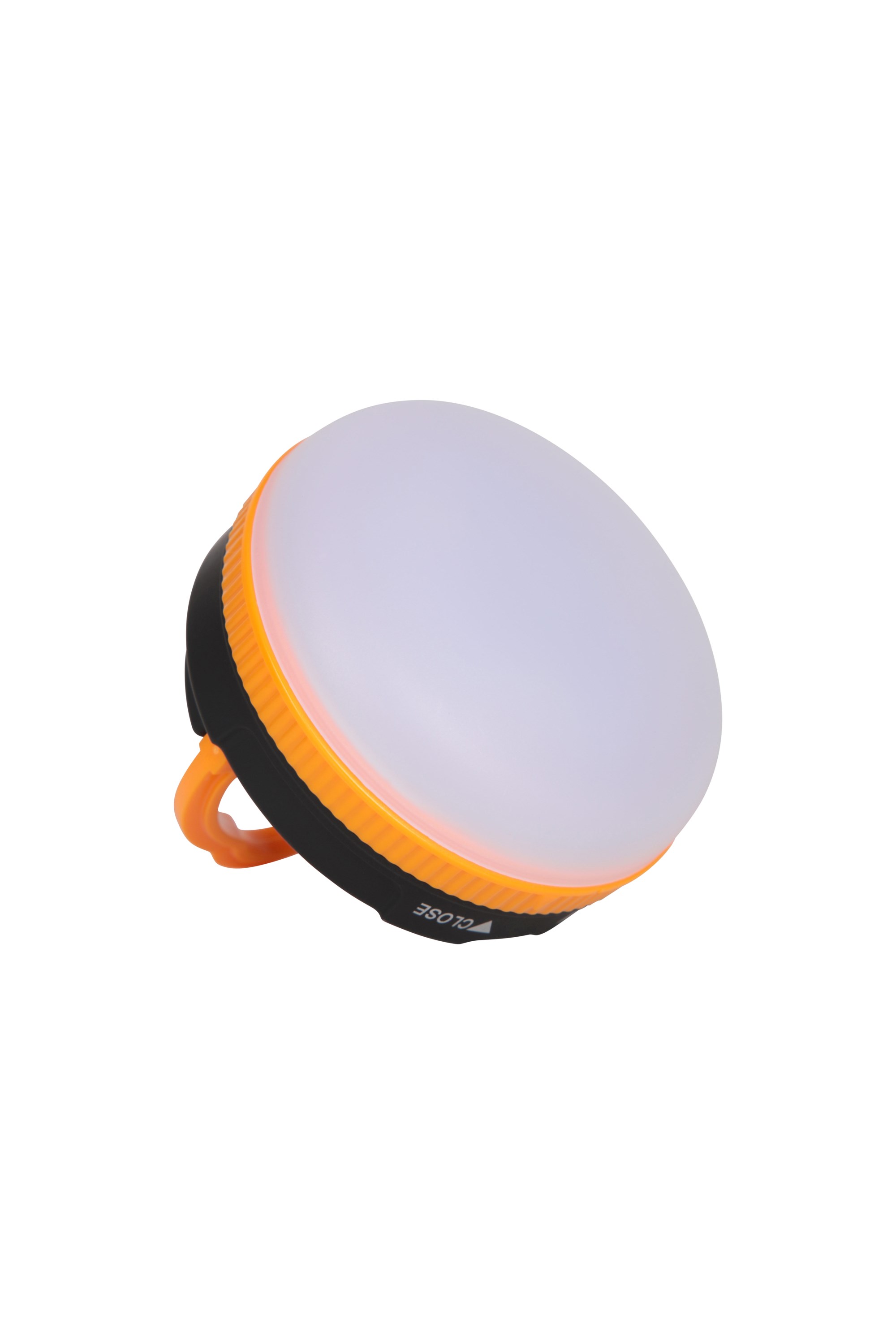
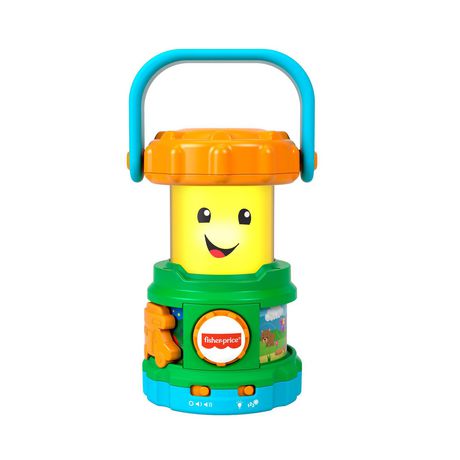
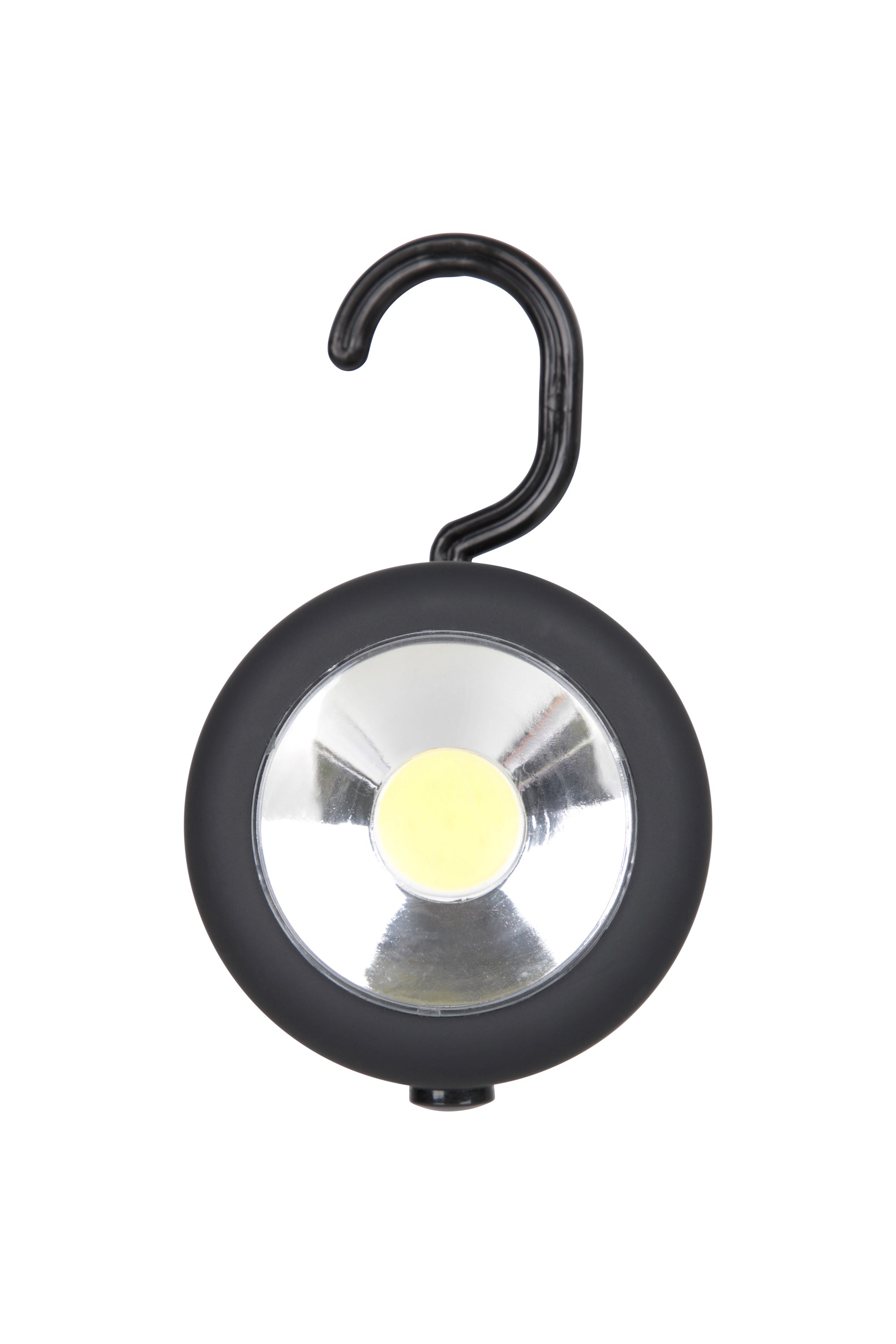
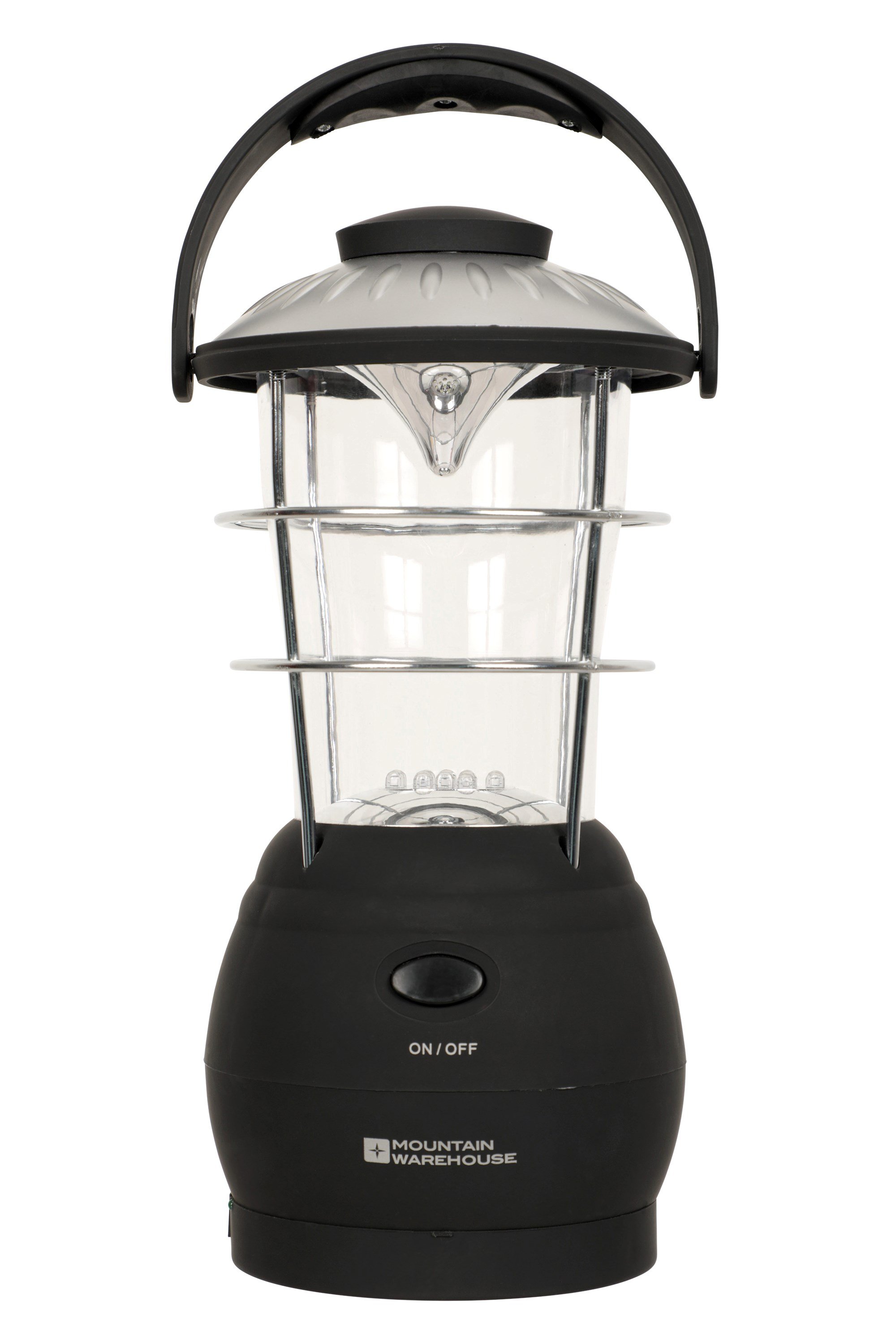
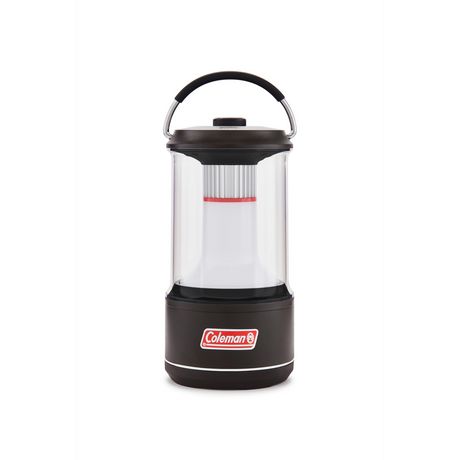
Propane: The Stalwart Companion
Propane stands tall among lantern fuel types as one of the most reliable and widely used options for outdoor lighting. With its long history and proven performance, propane has become a favourite for many campers and outdoor enthusiasts. Let’s dive into the specifics of propane lanterns, exploring their history, advantages, and potential drawbacks.
Overview of Propane Lanterns
Propane lanterns have been illuminating campsites for decades. The first propane lanterns appeared in the early 20th century, revolutionizing outdoor lighting with their bright, steady flame. These lanterns use pressurized propane gas stored in metal canisters, which is released and ignited to produce light. Today, many popular brands like Coleman and Primus offer a variety of propane lanterns, each designed to meet different camping needs.
Propane is a versatile fuel, not just for lanterns but also for stoves and heaters. This versatility makes it a convenient choice for campers who want to minimize the number of different fuels they need to carry. Propane canisters are available in various sizes, from small, portable options perfect for backpacking to larger canisters suitable for extended camping trips.
Advantages of Propane
One of the biggest advantages of propane among lantern fuel types is its availability and cost. Propane canisters are widely available at outdoor stores, hardware shops, and even many supermarkets, making it easy to find and stock up on fuel. The cost of propane is generally reasonable, especially when considering the long burn time and efficiency it offers.
Another major benefit of propane lanterns is their ease of use. Lighting a propane lantern is typically as simple as attaching the canister, turning the valve, and igniting the gas with a match or built-in igniter. This straightforward operation makes propane lanterns a great choice for beginners and seasoned campers alike. Additionally, propane lanterns provide a consistent, bright light that can illuminate a large area, making them ideal for group camping trips or base camps.
Propane lanterns also perform well in a variety of weather conditions. Unlike butane, which struggles in cold temperatures, propane remains effective even in freezing conditions. This reliability makes propane a go-to option for winter camping or high-altitude adventures where temperatures can drop significantly.
Drawbacks of Propane
Despite its many advantages, propane does have some drawbacks among lantern fuel types. One of the primary concerns is the weight and bulkiness of propane canisters. While small canisters are available, they still add noticeable weight to your pack, which can be a drawback for backpackers or those trying to minimize their load. Larger canisters, while offering longer burn times, are even bulkier and can take up significant space in your gear.
Another consideration is the environmental impact of propane. As a fossil fuel, propane contributes to greenhouse gas emissions when burned. While propane is cleaner-burning than some other fossil fuels, it’s still not as eco-friendly as renewable options like solar-powered lanterns. Proper disposal of empty propane canisters is also important to prevent environmental contamination.
Finally, safety is a critical factor when using propane among lantern fuel types. Propane is stored under pressure, and canisters can be hazardous if not handled correctly. It’s essential to check canisters for any signs of damage or leaks before use and to follow all safety guidelines provided by the manufacturer. Storing propane canisters in a cool, well-ventilated area away from open flames or high heat sources is also crucial to prevent accidents.
Real-Life Experiences
Let me share a couple of real-life experiences to highlight the pros and cons of propane lanterns. On a summer camping trip in Yosemite, I relied on a trusty propane lantern to light up our campsite. The steady, bright light allowed us to enjoy evenings around the campfire, cook dinner, and play cards without worrying about running out of fuel. The convenience of easily finding and replacing propane canisters made the trip hassle-free.
However, on another occasion during a solo backpacking trip in the Appalachian Mountains, I opted for a propane lantern and quickly realized the added weight of the canister was a burden on long hikes. While the light it provided was excellent, I found myself wishing for a lighter alternative like a butane or battery-powered lantern to reduce my load.
Conclusion
In conclusion, propane stands out among lantern fuel types for its reliability, ease of use, and performance in various conditions. It’s an excellent choice for campers who prioritize consistent, bright lighting and don’t mind the extra weight and bulk. Whether you’re heading out for a weekend camping trip or setting up a base camp for an extended adventure, a propane lantern can be a steadfast companion to light your way. Just remember to handle it with care, follow safety guidelines, and consider the environmental impact of your fuel choice. Happy camping!
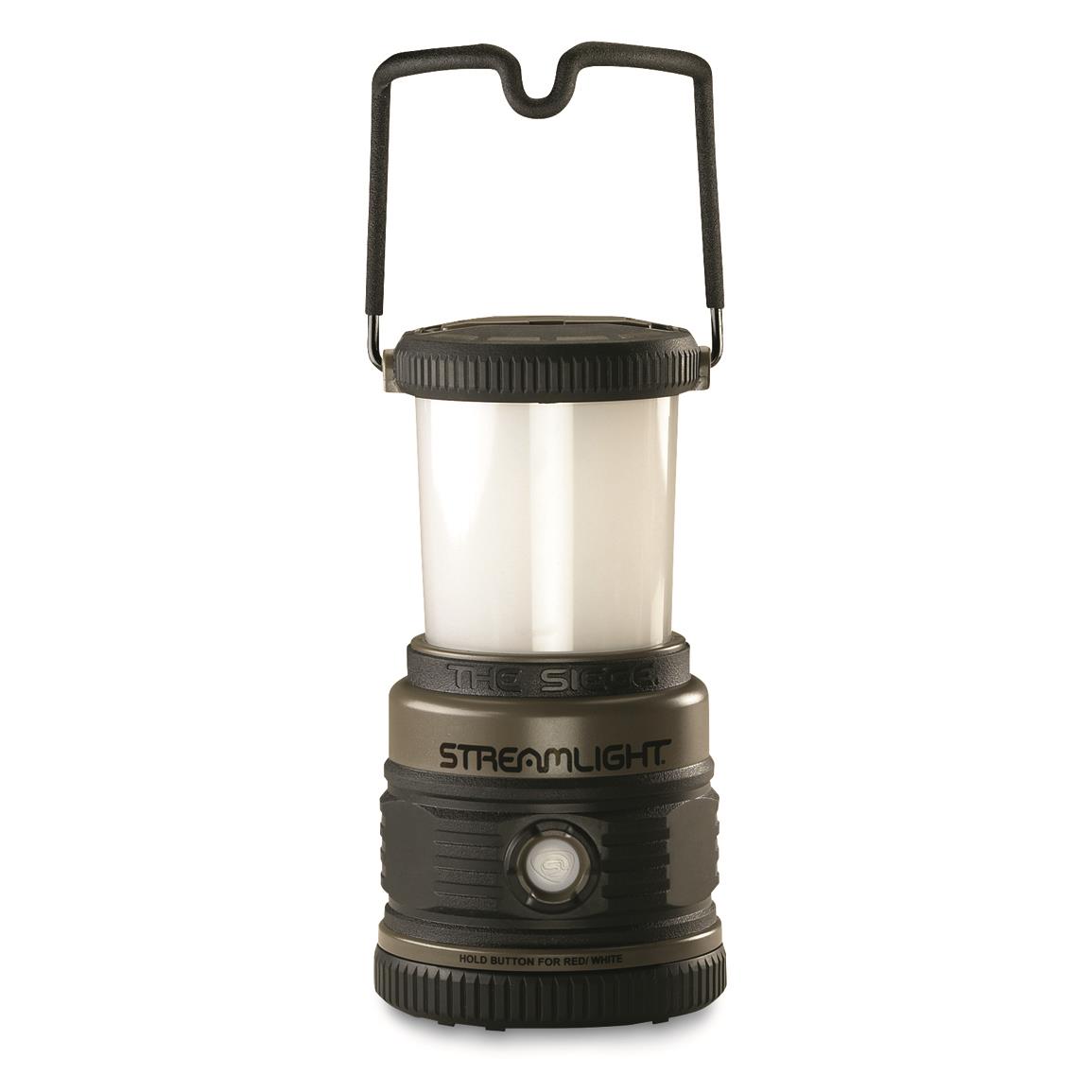

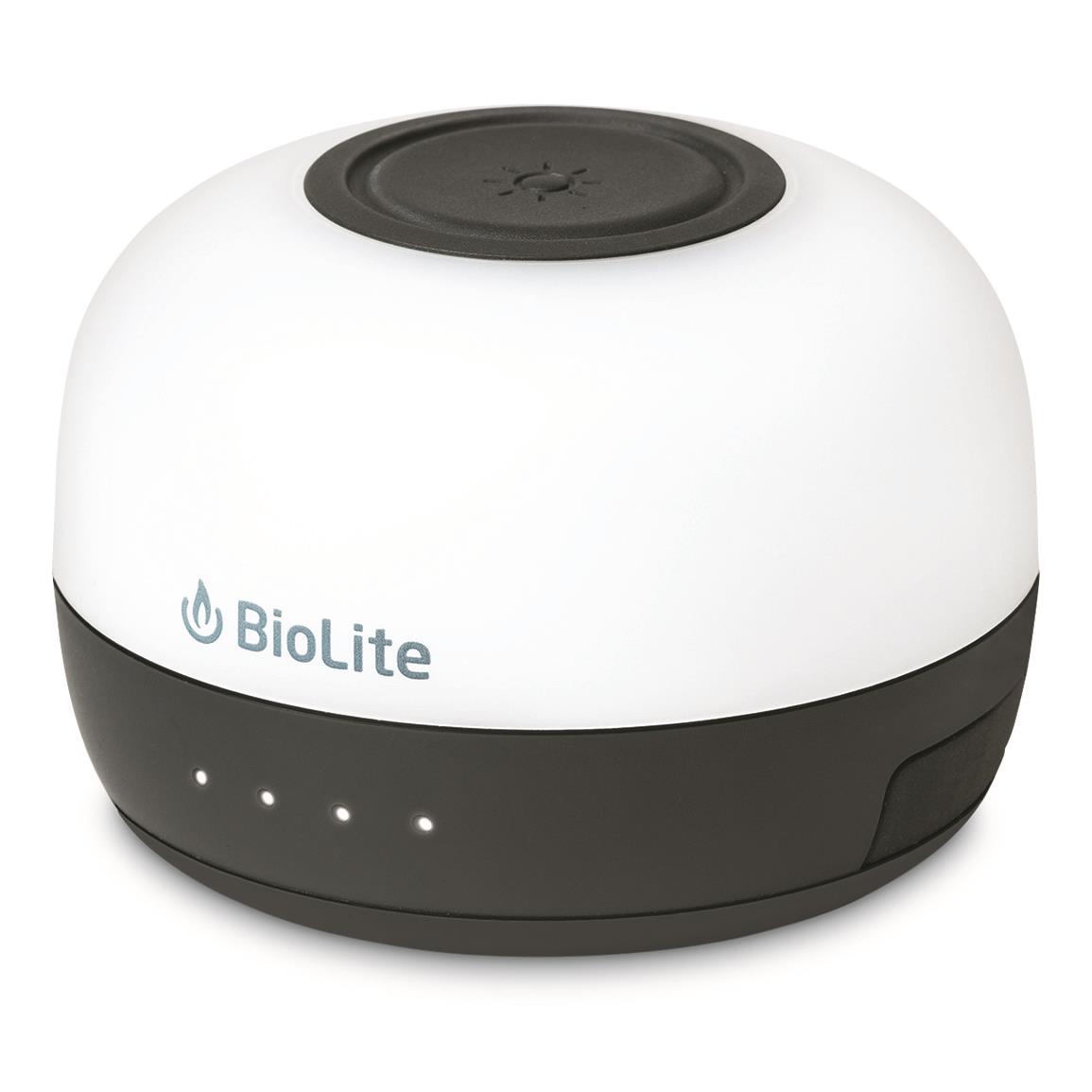


Butane: The Lightweight Contender
Among the various lantern fuel types, butane stands out for its portability and ease of use. This fuel type is particularly popular among backpackers and hikers who need to keep their gear lightweight without compromising on performance. Butane lanterns offer a convenient and efficient lighting solution, but like all lantern fuel types, they come with their own set of pros and cons. Let’s delve into the world of butane and see what makes it such a compelling option for outdoor enthusiasts.
Butane Lantern Basics
Butane, a type of hydrocarbon gas, is stored in lightweight canisters under pressure. These canisters are easy to attach to compatible lanterns, making setup a breeze even for beginners. When ignited, butane provides a clean, bright flame, making it a reliable source of light for camping trips. Some of the leading brands that produce butane lanterns include MSR, Jetboil, and Coleman, each offering models that cater to different needs and preferences.
One of the appealing aspects of butane among lantern fuel types is its compact design. Butane canisters are generally smaller and lighter than propane canisters, making them an excellent choice for those who prioritize weight and space. This portability makes butane lanterns ideal for backpacking, where every ounce counts.
Pros of Butane Lanterns
The primary advantage of butane lanterns among lantern fuel types is their lightweight and compact nature. Butane canisters typically weigh less than propane canisters, which is a significant benefit for long-distance hikers and ultralight backpackers. The smaller size of butane canisters also means they take up less space in your pack, allowing you to carry more essential gear.
Butane is known for its clean-burning properties. It produces a steady, bright flame with minimal soot or residue, which means less maintenance and cleaning for your lantern. This efficiency extends to the environmental impact as well; while butane is still a fossil fuel, it burns cleaner than many alternatives, resulting in lower emissions and less pollution.
Another benefit of butane among lantern fuel types is its user-friendly design. Butane lanterns are typically straightforward to use, with simple attachment and ignition mechanisms. Many models feature piezo igniters, which allow you to light the lantern with the push of a button, eliminating the need for matches or lighters. This ease of use makes butane lanterns a great option for novice campers and those who prefer hassle-free gear.
Cons of Butane Lanterns
Despite their advantages, butane lanterns have some drawbacks that are important to consider. One of the main issues with butane among lantern fuel types is its performance in cold weather. Butane has a higher boiling point than propane, which means it doesn’t vaporize as well at low temperatures. In very cold conditions, butane lanterns can struggle to maintain a steady flame, making them less reliable for winter camping or high-altitude adventures.
Availability and cost are also factors to keep in mind. While butane canisters are generally affordable, they are not as widely available as propane canisters. Depending on your location, you might find it challenging to restock your butane supply, especially in more remote areas. This limitation can be a significant drawback for extended trips where resupplying might be necessary.
Another consideration is the environmental impact of disposable butane canisters. While they are convenient, these single-use canisters contribute to waste if not properly recycled. Some outdoor enthusiasts prefer refillable options or alternative fuels to minimize their ecological footprint. If you choose butane among lantern fuel types, be sure to check local recycling programs and dispose of empty canisters responsibly.
Real-Life Experiences
To give you a better sense of how butane performs among lantern fuel types, let me share a few personal experiences. During a summer hiking trip along the Pacific Crest Trail, I relied on a butane lantern for its lightweight convenience. The compact canisters fit easily into my backpack, and the clean, bright light was perfect for setting up camp after long days on the trail. The ease of use and minimal maintenance were a real boon, allowing me to focus more on enjoying the journey and less on managing my gear.
However, on another trip in the Rockies during early spring, the temperatures dropped unexpectedly. My butane lantern struggled to stay lit in the cold, leaving me in the dark on a few chilly nights. This experience highlighted the limitations of butane in colder conditions and reminded me of the importance of matching your fuel type to the environment you’ll be exploring.
Conclusion
In conclusion, butane holds a special place among lantern fuel types for its portability, clean-burning properties, and ease of use. It’s an excellent choice for lightweight backpacking and short camping trips where minimizing weight and maximizing convenience are top priorities. However, its limitations in cold weather and potential availability issues mean it’s not the perfect solution for every situation. By understanding the strengths and weaknesses of butane lanterns, you can make an informed decision and ensure your camping experience is as enjoyable and well-lit as possible. Happy adventuring!









Liquid Fuel: The Versatile Veteran
Among the myriad of lantern fuel types, liquid fuel stands out for its versatility and robust performance. Liquid fuel lanterns have been a staple in the camping world for generations, offering reliability and high energy output. These lanterns can run on various types of fuel, including white gas, kerosene, and even unleaded gasoline. Let’s explore the intricacies of liquid fuel lanterns, their benefits, and the challenges they present.
Understanding Liquid Fuel Lanterns
Liquid fuel lanterns have a long history of use in outdoor settings. These lanterns are designed to burn a variety of fuels, making them incredibly versatile. White gas, also known as naphtha, is a popular choice for its clean-burning properties and high heat output. Kerosene is another common fuel, known for its availability and cost-effectiveness. Some liquid fuel lanterns can even run on unleaded gasoline, providing a convenient option if other fuels are not available.
The mechanics of liquid fuel lanterns are relatively straightforward. The fuel is stored in a reservoir and fed to a burner through a pressurized system. This system requires occasional maintenance, such as cleaning and replacing parts, to ensure optimal performance. Brands like Coleman, MSR, and Petromax offer a range of liquid fuel lanterns, each with unique features tailored to different camping needs.
Benefits of Liquid Fuel Lanterns
One of the primary advantages of liquid fuel among lantern fuel types is its high energy output. Liquid fuels generally provide more energy per unit of weight compared to gaseous fuels like propane or butane. This means that a liquid fuel lantern can burn brighter and longer, making it an excellent choice for extended camping trips or situations where reliable lighting is crucial.
Versatility is another significant benefit. Liquid fuel lanterns can burn multiple types of fuel, giving you flexibility depending on your location and the availability of fuel. For example, white gas is widely available in outdoor and camping stores, while kerosene can be found in hardware stores and even some supermarkets. If you run out of your primary fuel, unleaded gasoline from a nearby gas station can serve as a backup, ensuring you’re never left in the dark.
Liquid fuel lanterns are also known for their durability and longevity. These lanterns are built to withstand the rigours of outdoor use, from the rugged construction of the fuel reservoir to the sturdy burner assembly. With proper maintenance, a liquid fuel lantern can last for many years, providing reliable lighting on countless adventures.
Challenges of Liquid Fuel Lanterns
While liquid fuel lanterns offer many benefits, they also come with a few challenges. One of the main drawbacks is the need for regular maintenance. Liquid fuels can leave behind residues that clog the burner and other parts of the lantern. Cleaning and maintaining these components is essential to keep the lantern functioning correctly. This maintenance can be time-consuming and may require specific tools and knowledge.
Safety is another critical consideration. Liquid fuels are highly flammable and must be handled with care. Spills can create fire hazards, and the pressurized system of the lantern adds an element of risk. It’s important to follow all safety guidelines provided by the manufacturer and to store fuel in appropriate containers away from heat sources and open flames.
Transporting liquid fuel can also be a challenge. Unlike disposable propane or butane canisters, liquid fuel must be stored in sturdy, leak-proof containers. These containers can add weight and bulk to your gear, which may be a concern for backpackers or those with limited space. Additionally, the smell of some liquid fuels, like kerosene, can be strong and unpleasant, requiring careful storage to avoid contamination of your other equipment.
Real-Life Experiences
Let me share a couple of real-life experiences to illustrate the pros and cons of liquid fuel among lantern fuel types. On a winter camping trip in the Adirondacks, I relied on a white gas lantern to light our base camp. The bright, steady light was invaluable during the long, dark nights, and the high energy output ensured the lantern burned throughout the evening without needing constant refueling. The lantern’s performance in the cold was impeccable, a testament to the reliability of liquid fuel in harsh conditions.
However, on another occasion during a canoe trip in the Boundary Waters, transporting liquid fuel proved to be a hassle. The fuel containers added significant weight to our packs, and the occasional whiff of kerosene was a constant reminder of the precautions needed to avoid spills. Despite these challenges, the versatility and performance of the liquid fuel lantern made it worth the extra effort.
Conclusion
In conclusion, liquid fuel lanterns hold a unique place among lantern fuel types for their high energy output, versatility, and durability. They are an excellent choice for campers who need reliable, long-lasting light and don’t mind the extra maintenance and careful handling required. Whether you’re embarking on an extended expedition or setting up a winter base camp, a liquid fuel lantern can provide the illumination you need to make your adventure safe and enjoyable. By understanding the benefits and challenges of liquid fuel, you can make an informed decision and choose the best lantern fuel type for your needs. Happy camping!
Solar-Powered Lanterns: The Eco-Friendly Innovator
Among the various lantern fuel types, solar-powered lanterns represent a significant shift towards sustainable and environmentally friendly camping solutions. These lanterns harness the power of the sun, offering a renewable and clean source of light for your outdoor adventures. Let’s explore the technology behind solar-powered lanterns, their advantages, limitations, and real-world applications.
Introduction to Solar Lanterns
Solar-powered lanterns utilize photovoltaic cells to convert sunlight into electrical energy, which is then stored in rechargeable batteries. This stored energy powers LED lights, providing illumination without the need for traditional fuels like propane, butane, or liquid fuels. Brands like Goal Zero, MPOWERD, and BioLite are leading the charge in producing innovative and reliable solar lanterns designed for the modern camper.
One of the most appealing aspects of solar-powered lanterns among lantern fuel types is their environmental friendliness. By using renewable energy, these lanterns reduce your carbon footprint and minimize the impact on nature. This makes them an excellent choice for eco-conscious campers who want to enjoy the great outdoors without harming it.
Advantages of Solar Lanterns
The primary advantage of solar-powered lanterns among lantern fuel types is sustainability. These lanterns rely on the sun, an abundant and renewable energy source, to provide light. This means you don’t need to carry or purchase additional fuel, reducing both cost and environmental impact. Solar lanterns are especially useful for extended camping trips where resupplying fuel might be challenging.
Another significant benefit is the low operational cost. Once you’ve invested in a quality solar lantern, the ongoing cost is virtually zero. There’s no need to buy fuel canisters or batteries, and the lanterns themselves require minimal maintenance. This makes solar-powered lanterns a cost-effective option in the long run.
Solar lanterns are also incredibly convenient. They typically come with built-in rechargeable batteries and USB ports, allowing you to charge them via solar panels during the day and use them at night. Some models even include additional features like USB ports for charging other devices, adding versatility to your camping gear.
Limitations of Solar Lanterns
Despite their many benefits, solar-powered lanterns have some limitations. One of the main challenges is their dependency on sunlight. In areas with limited sunlight, such as dense forests or regions with long periods of overcast weather, solar lanterns may not charge effectively. This can leave you without light when you need it most, which is a significant drawback among lantern fuel types.
The initial investment in a high-quality solar lantern can also be relatively high compared to other lantern fuel types. While the long-term savings are substantial, the upfront cost might be a barrier for some campers. Additionally, not all solar lanterns are created equal; lower-quality models may not provide the same level of performance or durability as their higher-end counterparts.
Durability and performance in extreme conditions can also be concerns. While many solar lanterns are designed to be weather-resistant, they might not perform as well in harsh environments compared to traditional fuel-based lanterns. For example, extreme cold can reduce battery efficiency, and heavy rain or snow can obstruct the solar panels, hindering their ability to charge.
Real-Life Experiences
Let me share some real-life experiences to illustrate the practical use of solar-powered lanterns among lantern fuel types. On a summer trip to the Grand Canyon, I relied on a solar lantern to light our campsite. The ample sunlight during the day ensured that the lantern was fully charged by evening, providing bright, consistent light throughout the night. The built-in USB port was a bonus, allowing me to charge my phone and other small devices, which was incredibly handy.
However, on another occasion during a late fall trip in the Pacific Northwest, the overcast skies and frequent rain made it challenging to keep the solar lantern charged. Despite its weather-resistant design, the lack of consistent sunlight meant that the lantern’s battery struggled to maintain a full charge. This experience highlighted the importance of considering the environmental conditions when choosing solar lanterns among lantern fuel types.
Innovations and Future Prospects
The field of solar-powered lanterns is rapidly evolving, with new innovations enhancing their functionality and efficiency. For example, some modern solar lanterns come with integrated hand-crank generators, providing a backup charging method when sunlight is scarce. Others feature advanced battery management systems that optimize charging and discharging cycles, extending the lifespan of the batteries.
As technology advances, we can expect solar-powered lanterns to become even more efficient and affordable. Improvements in photovoltaic cell efficiency and battery technology will likely lead to longer-lasting and more powerful solar lanterns, making them an increasingly viable option among lantern fuel types for all kinds of outdoor activities.
Conclusion
In conclusion, solar-powered lanterns offer a unique and eco-friendly option among lantern fuel types. Their reliance on renewable energy makes them a sustainable choice for environmentally conscious campers, while their low operational cost and convenience add to their appeal. However, their dependency on sunlight and higher initial cost can be limitations that need to be considered. By understanding the advantages and challenges of solar lanterns, you can make an informed decision that best suits your camping needs and environmental values. Happy camping!
Battery-Powered Lanterns: The Modern Marvel
Among the diverse lantern fuel types, battery-powered lanterns have emerged as a modern marvel, combining convenience and portability with advanced lighting technology. These lanterns are powered by various types of batteries, offering an easily accessible and user-friendly option for campers and outdoor enthusiasts. Let’s delve into the world of battery-powered lanterns, exploring their strengths, weaknesses, and practical applications.
Overview of Battery-Powered Lanterns
Battery-powered lanterns operate using different types of batteries, including disposable alkaline, rechargeable NiMH (Nickel-Metal Hydride), and lithium-ion batteries. These lanterns often feature LED bulbs, which are highly efficient and provide bright, consistent light with minimal power consumption. Brands like Black Diamond, UCO, and Goal Zero are renowned for their high-quality battery-powered lanterns, each designed to cater to a variety of outdoor needs.
One of the standout features of battery-powered lanterns among lantern fuel types is their ease of use. Simply insert the batteries, switch on the lantern, and you have instant light. This simplicity makes them an excellent choice for beginners and seasoned campers alike, eliminating the need for fuel refills or pressurized gas canisters.
Strengths of Battery-Powered Lanterns
The primary strength of battery-powered lanterns among lantern fuel types is their convenience. Batteries are widely available and easy to replace, making these lanterns highly practical for spontaneous trips or emergency situations. Rechargeable battery models add another layer of convenience, allowing you to recharge them via USB ports, solar panels, or car adapters, ensuring you have light whenever you need it.
Battery-powered lanterns are also incredibly lightweight and portable. Unlike propane or liquid fuel lanterns, which require heavy canisters and careful handling, battery-powered lanterns can be easily packed and carried, making them ideal for backpacking, hiking, and other activities where minimizing weight is crucial. Their compact design also means they take up less space in your gear, giving you more room for other essentials.
Another significant advantage of battery-powered lanterns is their efficiency. LED bulbs used in these lanterns are highly energy-efficient, providing long burn times on a single set of batteries. This efficiency extends the lifespan of the batteries, reducing the frequency of replacements and making your camping trips more sustainable. Additionally, the LED bulbs produce minimal heat, making these lanterns safer to use inside tents or enclosed spaces.
Weaknesses of Battery-Powered Lanterns
Despite their many benefits, battery-powered lanterns have some drawbacks compared to other lantern fuel types. One of the primary concerns is battery life. Depending on the type and quality of batteries used, the runtime of a battery-powered lantern can vary significantly. While rechargeable batteries are more cost-effective in the long run, they require access to a power source for recharging, which might not always be available in remote locations.
The environmental impact of disposable batteries is another consideration. Alkaline batteries, if not disposed of properly, can contribute to environmental pollution. Opting for rechargeable batteries can mitigate some of this impact, but it’s essential to ensure proper recycling of all used batteries to minimize environmental harm.
Battery-powered lanterns can also be affected by extreme temperatures. Cold weather can reduce battery efficiency, leading to shorter runtimes and diminished light output. This limitation makes battery-powered lanterns less reliable in harsh winter conditions compared to other lantern fuel types like propane or liquid fuel, which perform better in the cold.
Real-Life Experiences
To illustrate the practical use of battery-powered lanterns among lantern fuel types, let me share a few personal experiences. During a multi-day hike in the Appalachian Mountains, I relied on a compact, battery-powered lantern for nighttime illumination. Its lightweight design and long battery life were perfect for the trek, allowing me to set up camp and cook dinner after dark without worrying about running out of light. The convenience of carrying spare batteries ensured that I always had a reliable source of light.
However, on a winter camping trip in the Sierra Nevada, I found that the cold temperatures significantly impacted the performance of my battery-powered lantern. Despite using high-quality lithium batteries, the lantern’s runtime was noticeably shorter, and I had to carry extra batteries to ensure I had enough light for the duration of the trip. This experience highlighted the importance of considering environmental conditions when choosing battery-powered lanterns among lantern fuel types.
Innovations and Future Prospects
The field of battery-powered lanterns is continually evolving, with new innovations enhancing their functionality and efficiency. For example, some modern lanterns feature hybrid power options, combining batteries with solar panels or hand-crank generators to provide multiple charging methods. Others come with advanced battery management systems that optimize power usage and extend battery life.
As technology advances, we can expect battery-powered lanterns to become even more efficient and environmentally friendly. Improvements in battery technology, such as higher-capacity rechargeable batteries and more efficient LED bulbs, will likely lead to longer-lasting and more powerful lanterns. These innovations will make battery-powered lanterns an increasingly viable option among lantern fuel types for all kinds of outdoor activities.
Conclusion
In conclusion, battery-powered lanterns are a modern marvel among lantern fuel types, offering convenience, portability, and efficiency. They are an excellent choice for campers who prioritize lightweight gear and easy-to-use lighting solutions. However, their dependency on battery life and susceptibility to extreme temperatures are factors to consider. By understanding the strengths and weaknesses of battery-powered lanterns, you can make an informed decision that best suits your camping needs. Whether you’re embarking on a weekend hike or preparing for an emergency situation, a reliable battery-powered lantern can be an indispensable part of your outdoor gear. Happy camping!
Candle Lanterns: The Traditional Choice
Amidst the advanced lantern fuel types available today, candle lanterns hold a special place as a traditional and nostalgic choice. These lanterns evoke a sense of simplicity and charm, reminiscent of old-school camping and historical outdoor adventures. Despite their simplicity, candle lanterns have a unique set of benefits and limitations. Let’s delve into the world of candle lanterns, exploring their history, advantages, and practical applications in the modern camping context.
Exploring Candle Lanterns
Candle lanterns have been used for centuries, long before the advent of modern fuels like propane, butane, or even liquid fuels. These lanterns operate on a simple principle: a wax candle is placed inside a protective casing, and when lit, it provides a warm, ambient light. Brands like UCO and Feuerhand have popularized modern versions of candle lanterns, incorporating features like spring-loaded candle chambers and wind-resistant designs to enhance their functionality.
The appeal of candle lanterns among lantern fuel types lies in their simplicity. There’s no need for pressurized canisters, batteries, or complex mechanisms. All you need is a candle and a match, making them an easy and straightforward lighting solution. This simplicity makes candle lanterns a favourite among those who appreciate traditional camping practices and a slower pace of life in the wilderness.
Pros of Candle Lanterns
One of the main advantages of candle lanterns is their simplicity and reliability. Unlike other lantern fuel types, candle lanterns don’t require any special fuel or equipment. Candles are widely available, inexpensive, and easy to replace, making these lanterns a cost-effective option for budget-conscious campers. Additionally, candles can be stored indefinitely without worrying about fuel degradation or battery life, providing a dependable light source whenever needed.
Candle lanterns also offer a unique ambiance that other lantern fuel types can’t replicate. The soft, flickering light of a candle creates a cozy and intimate atmosphere, perfect for evenings around the campfire or inside a tent. This natural light can be especially soothing and relaxing, helping you unwind and enjoy the tranquillity of nature.
Another benefit of candle lanterns is their low environmental impact. Candles, especially those made from beeswax or soy, are biodegradable and produce minimal emissions compared to fossil fuels. This makes them an eco-friendly choice for environmentally conscious campers. Plus, the lack of batteries or fuel canisters means less waste and fewer resources consumed.
Cons of Candle Lanterns
Despite their charm and simplicity, candle lanterns have several limitations compared to other lantern fuel types. One of the primary drawbacks is their limited brightness. While the soft light of a candle is pleasant, it’s not as bright or far-reaching as the light produced by propane, butane, or battery-powered lanterns. This makes candle lanterns less suitable for tasks that require strong illumination, such as cooking or navigating a campsite in the dark.
Candle lanterns also have a shorter burn time compared to other lantern fuel types. A standard candle typically burns for about 8 to 10 hours, which means you’ll need to carry multiple candles for longer trips. This can add weight and bulk to your gear, which may be a concern for backpackers or those trying to minimize their load.
Safety is another important consideration. Open flames, even when enclosed in a lantern, pose a fire hazard, especially in dry or windy conditions. It’s crucial to use candle lanterns with caution, ensuring they are placed on stable, non-flammable surfaces and kept away from flammable materials. Additionally, always extinguish the candle before going to sleep or leaving the lantern unattended.
Real-Life Experiences
Let me share a few real-life experiences to illustrate the use of candle lanterns among lantern fuel types. On a summer camping trip in the Adirondacks, I used a candle lantern to light up our campsite. The warm, flickering light created a cozy atmosphere that added to the enjoyment of our evening by the campfire. The simplicity of lighting the candle and the absence of any mechanical noise made it a delightful experience.
However, during a windy night in the Great Smoky Mountains, the limitations of a candle lantern became evident. Despite its wind-resistant design, the lantern struggled to stay lit, and the light was not bright enough to see clearly around the campsite. This experience underscored the importance of considering weather conditions and the specific lighting needs of your trip when choosing candle lanterns among lantern fuel types.
Historical Tidbits and Modern Adaptations
Candle lanterns have a rich history, dating back to ancient times when they were one of the primary sources of light. Historically, lanterns were often made of metal or glass, with intricate designs that reflected the craftsmanship of the period. Today, modern adaptations of candle lanterns incorporate durable materials and innovative features to enhance their usability while preserving their traditional charm.
For example, some modern candle lanterns feature spring-loaded mechanisms that automatically raise the candle as it burns, ensuring a consistent light output. Others include reflectors to maximize the light and protect the flame from wind and rain. These innovations make candle lanterns more practical and reliable for contemporary campers.
Conclusion
In conclusion, candle lanterns hold a unique place among lantern fuel types, offering a blend of simplicity, charm, and eco-friendliness. They are an excellent choice for those who appreciate traditional camping practices and the cozy ambiance of a flickering candlelight. However, their limitations in brightness, burn time, and safety should be carefully considered. By understanding the pros and cons of candle lanterns, you can make an informed decision and enjoy a truly nostalgic and serene camping experience. Whether you’re reminiscing about the past or creating new memories, a candle lantern can add a touch of magic to your outdoor adventures. Happy camping!
Comparing Fuel Efficiency and Burn Time
Among the various lantern fuel types, fuel efficiency and burn time are critical factors that can significantly impact your camping experience. Whether you’re embarking on a weekend getaway or a long-term expedition, understanding how different lantern fuel types perform in terms of fuel efficiency and burn time will help you make the best choice for your needs. Let’s dive into the details of what affects fuel efficiency and burn time, and how different fuels compare.
Factors Affecting Efficiency
Several factors influence the efficiency of lantern fuel types. These include the type of fuel used, the design and condition of the lantern, and external conditions such as temperature and altitude. For instance, propane and butane are generally considered efficient fuels due to their high energy content and clean combustion. However, their performance can vary depending on the specific lantern model and environmental conditions.
The quality of the fuel itself also plays a significant role. High-purity fuels tend to burn more efficiently and produce less residue, which can affect the lantern’s performance. For example, white gas is known for its high purity and efficiency, making it a preferred choice for liquid fuel lanterns. In contrast, lower-quality kerosene might produce more soot and require more frequent maintenance.
Calculating Burn Time
Burn time, or the duration a lantern can operate on a given amount of fuel, is a crucial consideration for any camper. Burn time depends on the fuel type, the lantern’s fuel consumption rate, and the settings at which the lantern is used. Most manufacturers provide estimated burn times for their lanterns, which can be a helpful starting point for comparison.
To calculate burn time, you can use the formula:
[ \text{Burn Time} = \frac{\text{Fuel Capacity}}{\text{Fuel Consumption Rate}} ]
For example, if a propane lantern has a fuel capacity of 16 ounces and a consumption rate of 2 ounces per hour, the estimated burn time would be:
[ \text{Burn Time} = \frac{16 \text{ ounces}}{2 \text{ ounces per hour}} = 8 \text{ hours} ]
However, real-world conditions such as temperature and usage patterns can affect these estimates. Using the lantern at higher settings for brighter light will consume fuel more quickly, reducing the overall burn time.
Comparing Different Fuel Types
Let’s compare the fuel efficiency and burn time of some common lantern fuel types: propane, butane, liquid fuel, solar, battery-powered, and candle lanterns.
Propane
Propane lanterns are known for their long burn times and high efficiency. A standard 16-ounce propane canister can provide up to 12-15 hours of light on a medium setting. Propane’s high energy content and clean combustion contribute to its efficiency, making it a reliable choice for extended camping trips. However, the performance of propane can decrease in extremely cold temperatures, which can affect burn time.
Butane
Butane lanterns are similar to propane in terms of efficiency, but their performance can be more sensitive to cold weather. A typical 8-ounce butane canister can last around 6-8 hours on a medium setting. Butane’s lightweight and compact canisters make it a convenient choice for backpackers, but the reduced efficiency in cold conditions should be considered for trips in colder climates.
Liquid Fuel
Liquid fuel lanterns, such as those using white gas or kerosene, offer excellent burn times and efficiency. A typical liquid fuel lantern can provide 8-10 hours of light on a single tank of fuel. White gas, in particular, is highly efficient and burns cleanly, making it a popular choice for serious campers. Kerosene, while less efficient and producing more soot, can still offer reliable burn times, especially in colder conditions where it outperforms propane and butane.
Solar-Powered
Solar-powered lanterns differ from other lantern fuel types in that their efficiency depends on sunlight availability rather than fuel. On a full charge, many solar lanterns can provide 8-12 hours of light. However, their efficiency can be affected by weather conditions and the quality of the solar panels. For extended trips in areas with ample sunlight, solar lanterns can be a sustainable and efficient option.
Battery-Powered
Battery-powered lanterns offer variable efficiency depending on the type of batteries used. High-quality lithium-ion batteries can provide long burn times, often exceeding 10-12 hours on a single charge. Alkaline batteries, while cheaper, typically offer shorter burn times. The efficiency of battery-powered lanterns is also influenced by the energy consumption of the LED bulbs, with modern LEDs providing excellent efficiency and long-lasting light.
Candle Lanterns
Candle lanterns, while charming, have the shortest burn times and lowest efficiency among lantern fuel types. A standard candle usually burns for about 8-10 hours. While multiple candles can be carried for longer trips, the light output is much lower compared to other lanterns, and the overall efficiency is less due to the limited energy content of wax.
Real-World Scenarios and Examples
To provide a practical perspective, let’s consider a few real-world scenarios. On a week-long camping trip in the Rockies, I used a propane lantern for its long burn time and reliability. Despite the cold temperatures, the lantern provided consistent light, and the 16-ounce canisters lasted longer than expected, providing peace of mind and reducing the need for frequent refueling.
In contrast, during a summer backpacking trip along the Pacific Crest Trail, I opted for a butane lantern due to its lightweight canisters. The efficiency was excellent in warm conditions, and the compact design made it easy to carry multiple canisters. However, I did notice a slight reduction in burn time at higher altitudes, underscoring the importance of considering environmental factors.
Conclusion
In conclusion, understanding the fuel efficiency and burn time of different lantern fuel types is essential for planning a successful camping trip. Each fuel type offers unique advantages and challenges, from the long-lasting performance of propane and liquid fuels to the convenience of battery-powered and solar lanterns. By comparing these factors and considering real-world conditions, you can choose the best lantern fuel type to meet your needs and ensure your adventures are well-lit and enjoyable. Happy camping!
Environmental and Health Considerations
When selecting lantern fuel types for your outdoor adventures, it’s essential to consider not only their performance and efficiency but also their environmental and health impacts. Different lantern fuel types can have varying effects on the environment and your well-being. Let’s explore these impacts in depth to help you make an informed and responsible choice.
Impact of Different Fuels
The environmental impact of lantern fuel types is a critical factor for eco-conscious campers. Fossil fuels like propane, butane, and liquid fuels (such as white gas and kerosene) contribute to greenhouse gas emissions when burned. These emissions can have a significant cumulative effect, especially when used frequently over time. Propane and butane, while efficient, are derived from non-renewable resources and release carbon dioxide and other pollutants into the atmosphere.
On the other hand, solar-powered and battery-powered lanterns offer more sustainable alternatives. Solar lanterns, in particular, harness renewable energy from the sun, producing no emissions during operation. This makes them an excellent choice for reducing your carbon footprint. However, the production and disposal of solar panels and batteries also have environmental impacts, so it’s important to consider the entire lifecycle of the product.
Battery-powered lanterns, especially those using rechargeable batteries, can also be environmentally friendly. Rechargeable batteries reduce the need for disposable alkaline batteries, which can leak harmful chemicals into the soil and water if not disposed of properly. Opting for high-quality rechargeable batteries and ensuring they are recycled responsibly can mitigate some of these environmental concerns.
Candle lanterns, while charming and nostalgic, have a relatively low environmental impact compared to fossil fuels but can still contribute to air pollution. Burning candles releases carbon dioxide and, depending on the type of wax used, can produce soot and other particulates. Beeswax or soy candles are more eco-friendly options, as they burn cleaner and are made from renewable resources.
Health Implications
The health implications of different lantern fuel types are also an important consideration. Burning fossil fuels like propane, butane, and liquid fuels can produce harmful by-products such as carbon monoxide, nitrogen oxides, and particulate matter. In enclosed or poorly ventilated areas, these emissions can pose serious health risks, including respiratory issues and carbon monoxide poisoning.
Propane and butane lanterns, for example, should always be used in well-ventilated areas to avoid the buildup of harmful gases. Liquid fuel lanterns, especially those burning kerosene, can produce strong odors and smoke, which can irritate the respiratory system and eyes. Ensuring proper ventilation and following safety guidelines can help mitigate these risks.
Solar-powered and battery-powered lanterns, on the other hand, do not produce harmful emissions during operation, making them safer for use in enclosed spaces like tents. However, the disposal of batteries, particularly non-rechargeable ones, can pose environmental and health risks if not handled correctly. It’s crucial to follow proper recycling protocols to prevent harmful chemicals from leaching into the environment.
Candle lanterns, while generally safe, do pose a fire hazard and can produce soot and other particulates when burned. Using high-quality candles made from beeswax or soy can reduce these emissions and improve indoor air quality. Additionally, always ensure candles are placed on stable, non-flammable surfaces and never leave them unattended to minimize fire risk.
Practical Tips for Safe Handling and Usage
To minimize the environmental and health impacts of your chosen lantern fuel types, here are some practical tips for safe handling and usage:
- Proper Ventilation: Always use fuel-burning lanterns in well-ventilated areas to prevent the buildup of harmful gases. Avoid using these lanterns inside tents or enclosed spaces without adequate airflow.
- Fuel Storage: Store fuels like propane, butane, and liquid fuel in approved containers and away from heat sources or open flames. Ensure canisters are in good condition and check for leaks before use.
- Battery Disposal: Use rechargeable batteries whenever possible and recycle all used batteries according to local regulations. This helps prevent harmful chemicals from contaminating the environment.
- Candle Safety: Use high-quality beeswax or soy candles to reduce soot and emissions. Always place candle lanterns on stable, non-flammable surfaces and never leave them unattended.
- Eco-Friendly Choices: Consider using solar-powered or rechargeable battery-powered lanterns to reduce your carbon footprint and minimize environmental impact. Look for products with sustainable and recyclable materials.
Real-World Experiences
Let me share a few real-world experiences that highlight the importance of considering environmental and health impacts when choosing lantern fuel types. During a group camping trip in the Smoky Mountains, we used a mix of propane and battery-powered lanterns. The propane lantern provided excellent light, but we made sure to use it outside the tent to avoid inhaling fumes. Inside the tent, we relied on battery-powered lanterns, which provided safe, emission-free lighting.
On another trip to the Sierra Nevada, I opted for a solar-powered lantern. The sunny days allowed the lantern to charge fully, providing ample light at night. The peace of mind knowing I wasn’t contributing to air pollution made the experience even more enjoyable. Additionally, I didn’t have to worry about fuel canisters or battery disposal, which reduced our environmental impact.
Conclusion
In conclusion, considering the environmental and health impacts of different lantern fuel types is crucial for responsible camping. While fossil fuels like propane, butane, and liquid fuels offer reliability and efficiency, they come with significant environmental and health risks. Solar-powered and battery-powered lanterns provide safer and more sustainable alternatives, though proper handling and disposal are still essential. By making informed choices and following best practices, you can enjoy your outdoor adventures while minimizing your impact on nature and safeguarding your health. Happy camping!
Tips for Selecting the Right Lantern Fuel for Your Needs
Choosing the right lantern fuel type is essential for a successful and enjoyable camping experience. With various options available, including propane, butane, liquid fuel, solar-powered, battery-powered, and candle lanterns, it can be challenging to determine which fuel best suits your needs. Here are some tips to help you select the right lantern fuel type, considering factors such as your camping activity, environment, budget, and practical considerations.
Matching Fuel Type to Activity
Your choice of lantern fuel type should align with your camping activity. Are you embarking on a weekend camping trip, an extended expedition, or a backpacking adventure? Each activity has different requirements that influence the ideal fuel type.
Weekend Camping: For short trips, convenience and ease of use are paramount. Propane lanterns are an excellent choice due to their reliability and long burn times. They provide ample light and are easy to operate, making them perfect for family outings or group camping.
Extended Expeditions: For longer trips, fuel efficiency and availability become critical. Liquid fuel lanterns, especially those using white gas, are ideal for extended expeditions. They offer high energy output and the versatility to use multiple fuel types, ensuring you have a reliable light source throughout your journey.
Backpacking: When weight and portability are crucial, butane lanterns and battery-powered lanterns are the best options. Butane canisters are lightweight and compact, making them easy to carry in a backpack. Battery-powered lanterns, especially those using rechargeable batteries, provide a lightweight and hassle-free lighting solution.
Considering the Camping Environment
The environment in which you’ll be camping plays a significant role in selecting the right lantern fuel type. Different fuels perform differently in varying conditions, so it’s essential to consider the specific environment of your trip.
Cold Weather: In cold environments, propane and liquid fuel lanterns are the most reliable. Propane maintains its efficiency in cold temperatures, while liquid fuels like white gas and kerosene perform well even in freezing conditions. Butane, on the other hand, may struggle in the cold due to its higher boiling point.
High Altitude: At high altitudes, where oxygen levels are lower, liquid fuel lanterns are the best choice. They burn efficiently and provide consistent light in thin air, making them ideal for mountainous regions.
Sunny Climates: In sunny environments, solar-powered lanterns are an eco-friendly and efficient option. They harness the power of the sun during the day, providing ample light at night without the need for additional fuel.
Budget and Practicality
Your budget and the practicality of the fuel type are also important factors to consider. Different lantern fuel types have varying costs and practical implications.
Budget-Friendly Options: Candle lanterns and butane lanterns are generally more affordable upfront. Candles are inexpensive and easy to replace, while butane canisters are reasonably priced and widely available. However, consider the ongoing cost of replacing candles or canisters for extended use.
Long-Term Investment: Solar-powered and battery-powered lanterns may have a higher initial cost but offer long-term savings. Solar lanterns use renewable energy, reducing the need for additional fuel purchases. Battery-powered lanterns with rechargeable batteries eliminate the recurring cost of disposable batteries, making them cost-effective over time.
Availability: The availability of fuel types can vary depending on your location. Propane and butane canisters are widely available at outdoor stores and supermarkets, while liquid fuels like white gas and kerosene may require specialty stores. Solar-powered lanterns and battery-powered lanterns are readily available and do not rely on fuel supplies, making them convenient for remote areas.
Real-Life Scenarios and Examples
To provide a practical perspective, let’s consider a few real-life scenarios:
Scenario 1: Family Camping Trip in a National Park: For a weekend camping trip with the family, a propane lantern is an excellent choice. Its long burn time and ease of use ensure reliable light for evening activities. Propane canisters are easy to find and replace, making the trip hassle-free.
Scenario 2: Solo Backpacking in the Appalachian Trail: For a solo backpacking adventure, a butane lantern is ideal due to its lightweight and compact design. The ease of carrying multiple canisters without adding significant weight to the pack makes it a practical choice.
Scenario 3: Winter Camping in the Rockies: In a cold environment like the Rockies, a liquid fuel lantern using white gas is the best option. Its high energy output and efficiency in cold temperatures ensure consistent light throughout the trip.
Additional Tips for Choosing Lantern Fuel Types
- Test Before Your Trip: If you’re trying a new lantern fuel type, test it before your trip to familiarize yourself with its operation and ensure it meets your needs.
- Check for Compatibility: Ensure that your lantern is compatible with the chosen fuel type. Some lanterns are designed for specific fuels, and using the wrong fuel can damage the lantern or reduce its efficiency.
- Consider Safety: Always follow safety guidelines for storing and handling fuels. Propane and butane canisters should be checked for leaks, and liquid fuels should be stored in approved containers away from heat sources.
- Pack Extras: For longer trips, pack extra fuel canisters, batteries, or candles to ensure you have enough light. Consider the burn time of your lantern and the duration of your trip when determining how much fuel to bring.
Conclusion
Selecting the right lantern fuel type is crucial for ensuring a safe and enjoyable camping experience. By considering factors such as your camping activity, environment, budget, and practicality, you can make an informed decision that best suits your needs. Whether you opt for the reliability of propane, the portability of butane, the versatility of liquid fuels, the sustainability of solar power, or the charm of candle lanterns, understanding the pros and cons of each fuel type will help you light your way on your next adventure. Happy camping!
Conclusion
As we’ve explored, the world of lantern fuel types is diverse and filled with options to suit every camper’s needs. From the reliable and long-lasting propane lanterns to the lightweight and efficient butane options, each fuel type brings unique advantages and challenges. Let’s recap what we’ve learned about these essential camping tools and why making an informed choice is so important.
Understanding the Options
We began our journey by delving into the various lantern fuel types, highlighting their histories and key characteristics. Propane lanterns stand out for their robust performance and reliability, especially in cold weather. Butane lanterns, on the other hand, offer the benefits of lightweight and compact design, making them ideal for backpackers and those looking to save on space and weight.
Liquid fuel lanterns, with their high energy output and versatility, are the veterans of the lantern world. They can run on multiple fuel types, providing flexibility and consistency in various conditions. Solar-powered lanterns represent the eco-friendly future, utilizing renewable energy to provide light without the need for traditional fuels. Battery-powered lanterns combine convenience and modern technology, offering long burn times and portability. Finally, candle lanterns bring a nostalgic charm, perfect for those who appreciate simplicity and a cozy ambiance.
Matching Fuel Type to Needs
Choosing the right lantern fuel type is not just about personal preference; it’s about matching the fuel to your specific needs. Consider the nature of your camping trips. Are you a weekend warrior or a long-distance hiker? Do you camp in extreme weather conditions or enjoy fair-weather outings? Each scenario might require a different fuel type.
For example, propane and liquid fuel lanterns are excellent for cold weather and long-term base camps due to their high energy output and efficiency. Butane and battery-powered lanterns are perfect for lightweight backpacking trips, offering easy portability and simple operation. Solar-powered lanterns are ideal for sunny climates and eco-conscious campers, while candle lanterns provide a unique, low-tech option for those who enjoy a touch of tradition.
Environmental and Health Considerations
Another critical aspect of choosing lantern fuel types is their environmental and health impacts. Fossil fuels like propane and butane, while effective, contribute to greenhouse gas emissions. Liquid fuels, depending on their type, can also pose environmental risks. Solar and battery-powered lanterns offer cleaner alternatives, but the production and disposal of batteries and solar panels must be managed responsibly.
Health implications are also significant. Using fuel-burning lanterns in enclosed spaces can lead to harmful emissions and health risks. Solar-powered and battery-powered options provide safer alternatives for indoor use. Candle lanterns, while charming, must be used with caution to avoid fire hazards and reduce particulate emissions.
Real-Life Applications
Reflecting on real-life camping scenarios helps illustrate the practical applications of different lantern fuel types. For instance, a propane lantern’s reliability in freezing temperatures proved invaluable during a winter camping trip in the Rockies. Conversely, the lightweight and easy-to-carry butane lanterns made a summer backpacking trip along the Pacific Crest Trail much more manageable.
In sunny environments, a solar-powered lantern provided ample light without the need for additional fuel, demonstrating its eco-friendly and efficient nature. Meanwhile, the simplicity and nostalgic charm of a candle lantern added a unique ambiance to a summer campsite in the Adirondacks.
Making an Informed Decision
Ultimately, the best lantern fuel type for you depends on a combination of factors: your specific needs, the environment you’ll be camping in, your budget, and your commitment to sustainability. By considering these elements and understanding the strengths and weaknesses of each fuel type, you can make a well-informed decision that enhances your camping experience.
Practical Tips
To help you choose the right lantern fuel type, here are some practical tips:
- Assess Your Needs: Consider the duration, frequency, and nature of your camping trips. Match the fuel type to your specific requirements.
- Consider the Environment: Think about the weather conditions and altitude of your camping destinations. Choose a fuel type that performs well in those conditions.
- Evaluate Your Budget: Balance the upfront and ongoing costs of different fuel types. Consider long-term savings with options like solar and rechargeable batteries.
- Prioritize Safety: Follow safety guidelines for storing and using fuels. Ensure proper ventilation when using fuel-burning lanterns.
- Think Sustainably: Opt for eco-friendly options when possible. Use rechargeable batteries and recycle spent fuel canisters and batteries responsibly.
Final Thoughts
Choosing the right lantern fuel type is a vital part of preparing for any camping adventure. Whether you prefer the tried-and-true performance of propane, the convenience of butane, the versatility of liquid fuels, the sustainability of solar power, or the simplicity of candle lanterns, there’s a perfect option for every camper. By understanding the pros and cons of each fuel type, you can ensure your trips are well-lit, safe, and enjoyable. So, pack your gear, choose your lantern wisely, and get ready to create unforgettable memories under the stars. Happy camping!

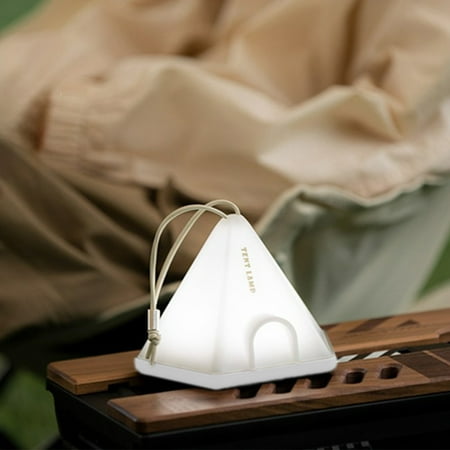
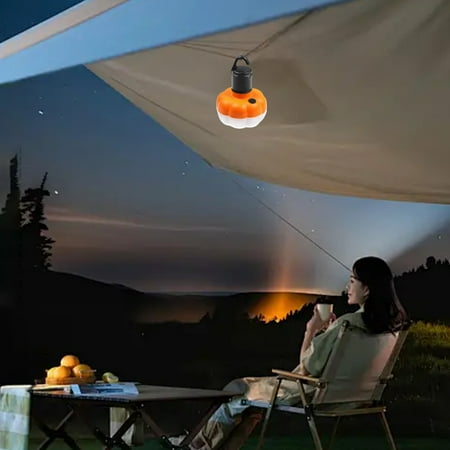
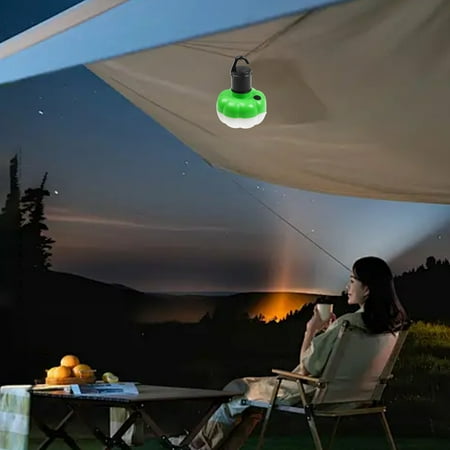
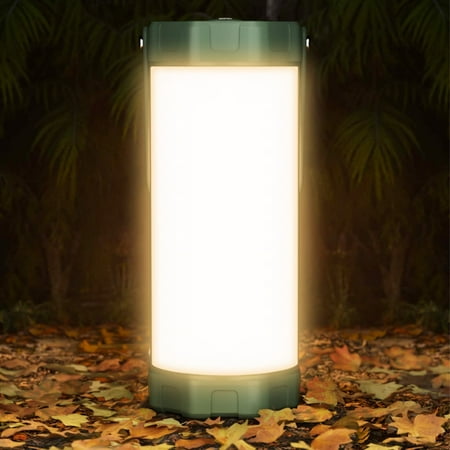

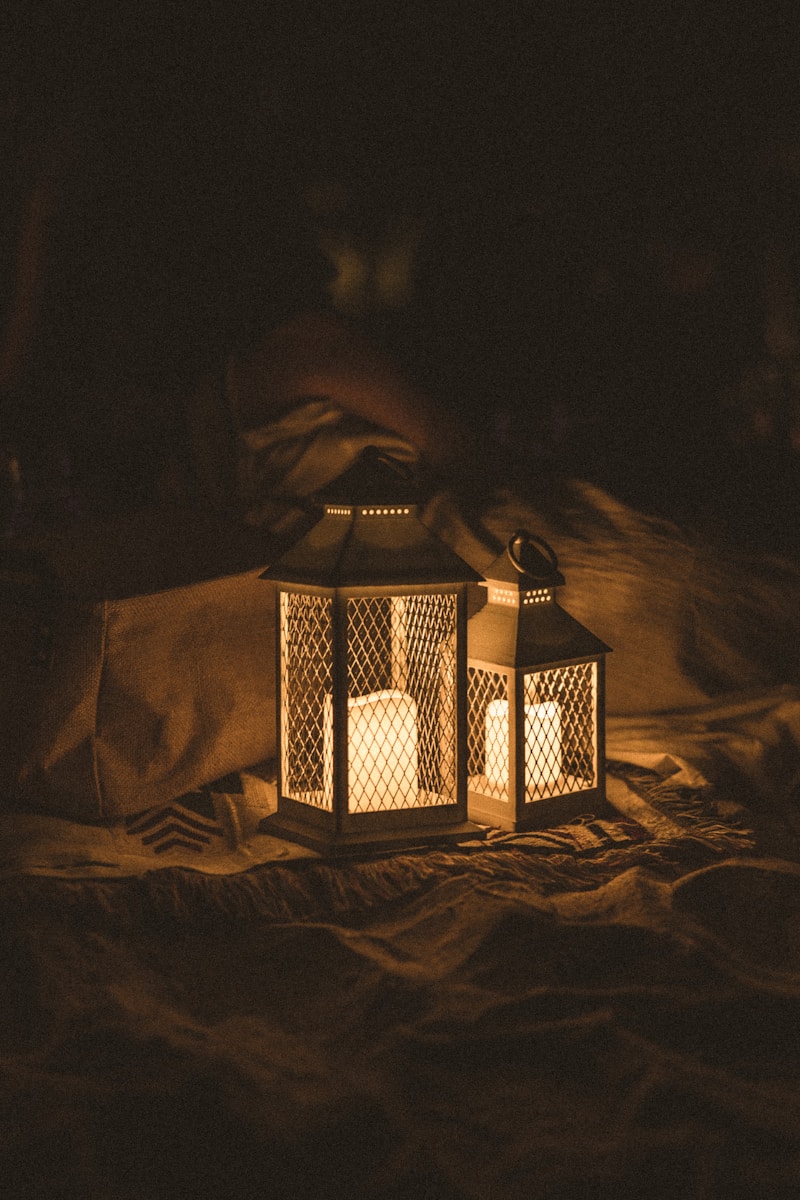
Leave a Reply